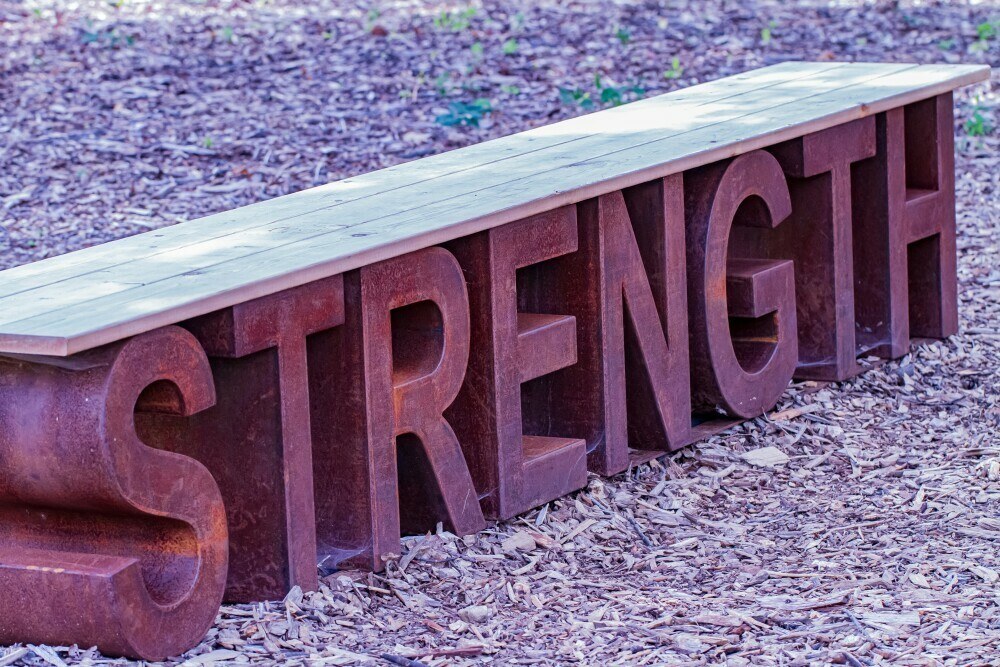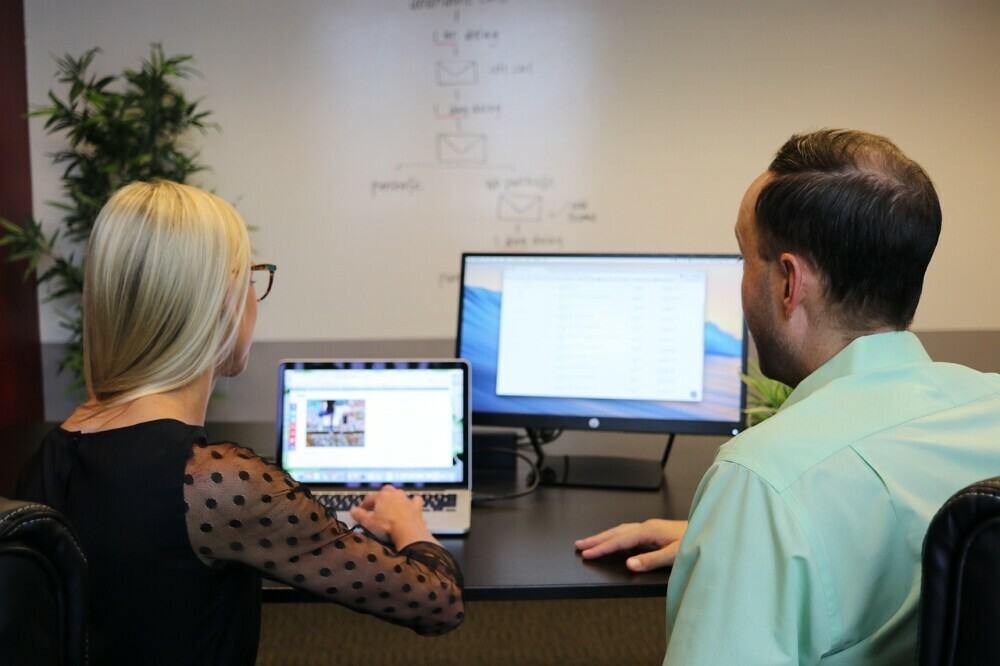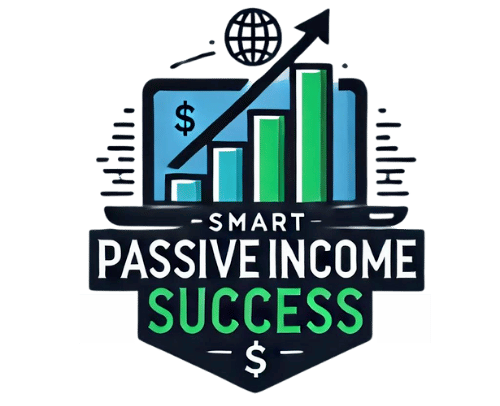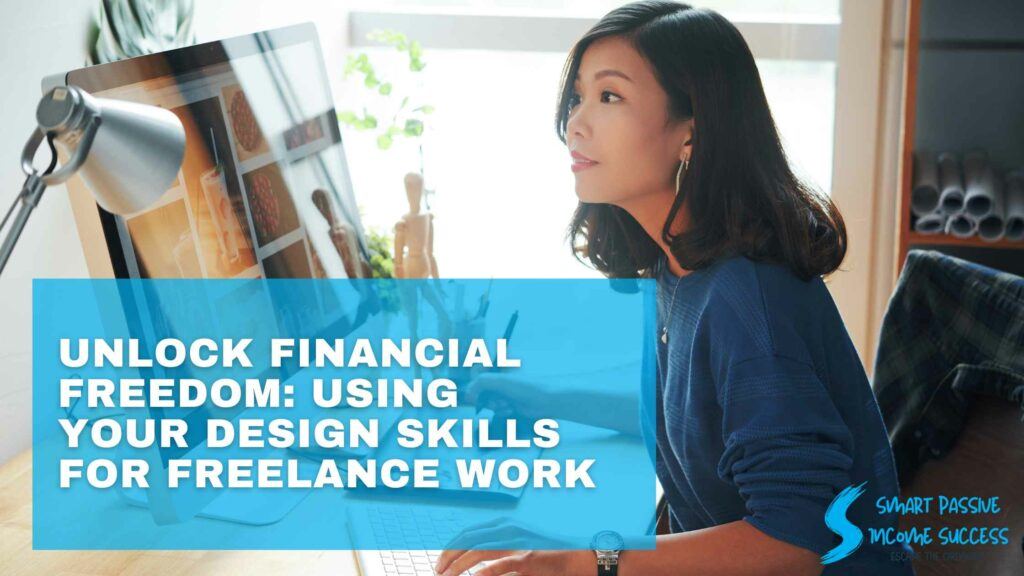Welcome to the vibrant world of freelance design! If you’re reading this, you’re considering the leap into freelancing or you’re just curious about what it entails. Either way, you’re in the right place.
In this blog post, we’ll explore the fascinating journey of using your design skills to carve out a successful freelance career. But this isn’t just about making a living; it’s about making a life that resonates with your passion for design and your desire for flexibility.
Freelance design isn’t just about creating pretty things; it’s a strategic dance of art and commerce, where your creativity meets the market’s need for innovation and visual storytelling. Designers like you are the architects behind the captivating visuals we see across digital platforms—whether it’s sleek websites, impactful branding, or engaging ads.
Ready to find out why your design skills are such hot commodities in the freelance marketplace? Want to discover how to turn your passion into profit and enjoy the freedom of choosing projects that inspire you? Let’s dive in and see how you can turn your design prowess into a thriving freelance business. We’ll walk through everything from preparing and positioning yourself in the market to landing clients and managing your own schedule.
So grab your sketchbook (or digital tablet), and let’s start sketching out your future in freelance design!
Table of Contents
Understanding the Freelance Market for Designers
As you venture into the freelance design world, it’s crucial to start with a solid understanding of the market landscape. The demand for freelance designers has never been higher, thanks to the continuous growth in digital marketing, e-commerce, and remote work culture. Companies, from startups to established corporations, are constantly on the lookout for talented individuals who can bring fresh perspectives to their visual identities.
The High Demand for Design Skills
Why are design skills in such high demand? Simply put, quality design directly impacts a company’s bottom line. Let’s explore a few examples where design plays a critical role:
- E-commerce: In the e-commerce sector, a designer’s ability to create an appealing and intuitive online shopping experience can significantly affect conversion rates. For instance, a well-designed product page that uses high-quality images and clear, compelling call-to-action buttons can lead to higher sales.
- Digital Marketing: Design is crucial in digital marketing, where the visual appeal of advertisements can determine their click-through rates. An eye-catching banner ad designed with striking colours and readable fonts attracts more attention, driving better campaign performance.
- Mobile Apps: As the use of mobile devices continues to rise, the demand for UX/UI designers who can craft user-friendly and aesthetically pleasing mobile apps is skyrocketing. A mobile app with a smooth, intuitive interface encourages longer usage times and higher engagement rates.
- Social Media: In the world of social media marketing, designers who can create visually engaging posts and stories help brands stand out in crowded newsfeeds. Innovative graphics and animations can elevate a brand’s visibility and audience interaction.
- Branding: Effective branding requires a cohesive visual identity, from logos to company letterheads, which communicates the essence of the company at a glance. Designers play a key role in developing brand identities that resonate emotionally with consumers, fostering brand loyalty.
Each of these examples showcases how critical design is across different platforms and industries. Your ability to create these assets makes you a valuable asset yourself. As businesses continue to recognise the importance of professional design in enhancing user experiences and marketing efforts, the opportunities for skilled freelance designers are bound to grow.
Related Post: Guide to Creating and Selling Online Courses
Identifying Your Unique Strengths

In the highly competitive world of freelance design, differentiating yourself is crucial. Start by taking a detailed inventory of your skills and strengths. What aspects of design do you excel at? Is it creating intuitive user interfaces that vastly improve user experience, or perhaps you have a knack for developing memorable brand identities that capture a company’s ethos? Recognising these strengths is the first step toward marketing yourself effectively to the right clients.
It’s beneficial to consider specific examples of your work that demonstrate these strengths. For instance, if user interface design is your forte, you might showcase a project where your design significantly reduced user friction or enhanced the overall usability of a mobile app. Alternatively, if your specialty is branding, provide case studies where your designs have helped transform a brand’s image and led to increased market recognition.
Next, reflect on the industries or types of projects that spark your passion. Aligning your interests with your skills not only improves the quality of your work but also boosts your professional satisfaction. For example:
- Tech Startups: If you’re energised by innovation, you might focus on tech startups that need dynamic and forward-thinking designs for their apps and digital platforms. Your ability to translate complex tech concepts into accessible designs can make you highly sought after in this sector.
- Local Businesses: Perhaps you find fulfilment in contributing to your local economy. Local businesses, whether cafes, boutiques, or service providers, often seek to establish a strong community presence through unique branding. Your designs could play a pivotal role in helping these businesses stand out and resonate with local customers.
- Nonprofits: If you’re driven by purpose and social impact, consider specialising in nonprofit design work. Nonprofits need compelling visual storytelling to communicate their missions and campaigns effectively. Your designs could help these organisations achieve greater outreach and impact.
- E-Commerce: With the booming e-commerce sector, there is a high demand for designers who can create engaging, sales-driving website designs. If you have a knack for creating layouts that offer seamless shopping experiences, this could be a lucrative niche.
By identifying your unique strengths and aligning them with specific markets or types of projects, you can carve out a niche that not only fulfills you but also attracts clients who will appreciate and seek out your particular expertise. This targeted approach helps you stand out in the crowded freelance marketplace and paves the way for more personalised and satisfying projects.
Related Post: Guide To Creating And Selling Digital Products For Passive Income
Building a Portfolio That Speaks Volumes

Your portfolio is your career’s showcase and often your first impression with potential clients. It needs to be more than just a collection of works; it should narrate the story of your professional journey and problem-solving capabilities.
- Showcase a Range of Work: Include a variety of projects that demonstrate your range. If you specialise in more than one area, make sure your portfolio reflects all aspects of your capabilities.
- Detail Your Creative Process: For each project, include a brief overview of your creative process. Discuss the challenges faced and how you addressed them with your designs. This not only shows your problem-solving skills but also gives potential clients insight into how you work.
- Highlight Successful Outcomes: Where possible, include testimonials from clients or metrics that demonstrate the success of your projects. For example, if a website redesign led to a 50% increase in traffic, make that a highlight.
- Keep It Updated: An outdated portfolio can give the wrong impression. Regularly add new projects, remove older ones that no longer represent your best work, and update your skills and tools section.
For detailed guides on setting up your freelance business, from contracts to taxes, check out the Freelancers Union at https://www.freelancersunion.org/. It’s an invaluable resource for freelancers seeking practical advice and community support.
Related Post: Is Passive Income Really Passive?
Selling Solutions, Not Just Designs

As a freelance designer, you’re not just a creator of attractive visuals; you’re a problem solver who offers valuable solutions to business needs. This shift in perspective from selling just a “design” to offering a “solution” can significantly change how potential clients perceive your work.
- Understand Business Objectives: Each project has a business goal, whether it’s increasing brand awareness, boosting user engagement, or driving sales. Your designs should align with these objectives, and your pitch should articulate how your design fulfils these goals.
- Communicate Value: When discussing projects with potential clients, focus on how your design solutions have improved business outcomes in the past. This could be through enhancing user experience, increasing customer satisfaction, or even boosting revenue.
- Be Consultative: Offer your expertise not just as a service but as a consultation. Help clients understand what they need, often before they know it themselves. This approach builds trust and positions you as an industry expert.
By approaching your design work as a comprehensive solution rather than a mere visual improvement, you position yourself not just as a designer, but as a vital strategic partner to your clients. This mindset shift is essential for sustaining a successful freelance career that consistently meets and exceeds client expectations.
Related Post: The Ultimate Guide To Profitable Side Hustles
Turn Your Passion into Profits
Landing Clients and Managing Relationships

Now that you’ve established your unique value proposition and have a portfolio that effectively communicates your skills and successes, the next crucial step is landing clients and building lasting relationships. This stage is about turning prospects into loyal clients who appreciate not only your talent but also your professional approach and reliability.
Finding Your First Clients
Starting out can be the toughest part of freelancing. Begin by tapping into your existing network; let your former colleagues, classmates, and friends know that you’re available for freelance work. They can be a great source of referrals and might even become your first clients.
Use online platforms tailored to freelance designers, such as Behance or Dribbble, to showcase your portfolio. These sites are not just about displaying your work; they also connect designers with potential clients from around the world. Additionally, consider joining general freelance marketplaces like Upwork or Fiverr. While these platforms are more competitive, they offer a wide variety of opportunities to work on diverse projects.
Building Strong Client Relationships
Securing a client is just the beginning. The key to a sustainable freelance career is building relationships that lead to repeat business. Here’s how you can make each client interaction count:
- Communicate Effectively: From the outset, be clear about your design process, timelines, and pricing. Regular updates and responsiveness go a long way in building trust and reliability.
- Deliver Consistently: Meet your deadlines, and ensure your work consistently meets or exceeds client expectations. Happy clients are more likely to return and refer others to you.
- Ask for Feedback: After completing a project, ask for client feedback. This shows that you value their opinion and are committed to improving your service. It also opens the door to further collaboration.
- Nurture the Relationship: Keep in touch with clients even after a project is completed. Send them articles that might interest them, wish them on important occasions, and update them about any new skills or services you offer. These small gestures make clients feel valued and keep you top of mind for future projects.
By consistently delivering exceptional work and nurturing professional relationships, you not only retain valuable clients but also create a network of referrals that can sustain and grow your freelance business.
Related Post: The Ultimate Guide To Profitable Side Hustles
Mastering Time Management and Productivity

As a freelancer, your ability to manage time effectively is crucial to your success. Juggling multiple clients and projects, along with the administrative tasks of running your own business, can be challenging. Here are some strategies and tools to help you stay organised and productive, ensuring you deliver quality work on time, every time.
Setting a Schedule
One of the first steps to effective time management is setting a realistic schedule. Use a digital calendar or planning app to block out time for different tasks. Include time for client work, administrative tasks, business development, and importantly, breaks. Being disciplined with a schedule helps prevent burnout and keeps productivity high.
Utilising Productivity Tools
There are numerous tools available that can help streamline your workflow and keep you on track. Project management tools like Trello, Asana, or Monday.com allow you to organise tasks, track progress, and set deadlines. For those who find it difficult to focus for long periods, techniques like the Pomodoro Technique can be useful. This method involves working in focused sprints followed by short breaks.
Prioritising Tasks
Learn to prioritise tasks based on urgency and importance. Start your day with a clear idea of what needs to be tackled first. This might mean completing a client design concept before responding to less urgent emails. Prioritising not only helps you stay focused but also ensures you’re making progress on critical tasks.
Dealing with Distractions
When working from home, distractions are plentiful—from social media notifications to household chores. Establish a dedicated workspace where you’re less likely to be disturbed. Communicate your working hours to family or housemates to minimise interruptions. Also, consider using apps that block distracting websites during work hours.
Planning for Peaks and Troughs
Freelance work can be cyclical, with busy periods followed by slower times. Use slower periods to prepare for upcoming projects, streamline your business processes, or update your portfolio. This is also a great time to invest in learning new skills or technologies that can enhance your offerings.
Related Post: Why Turning Your Hobby Into A Profitable Side Hustle Could Be Your Best Decision
Expanding Your Skills and Services

As a freelancer, staying updated with the latest trends and technologies in design is not just beneficial—it’s essential. Continuously improving your skill set can open new opportunities, attract more clients, and allow you to offer a wider range of services. Here’s how you can keep growing professionally:
Keeping Up with Industry Trends
Stay informed about the latest design trends and technologies. Subscribe to design magazines, follow influential designers on social media, and participate in design forums and webinars. Platforms like Behance and Dribbble not only showcase innovative design projects but also serve as a pulse on current trends and styles.
Learning New Tools and Technologies
The design industry is constantly evolving with new tools and software that can enhance your work and efficiency. Take time to learn new tools that can help you stay at the forefront of your field. For instance, if you’re a graphic designer, you might want to explore 3D design software like Blender or motion graphics tools like After Effects.
Expanding Your Service Offering
Once you are comfortable with new skills and tools, consider expanding your services. If you’re primarily a web designer, perhaps you could start offering UX/UI design or even basic coding services. This not only makes you more versatile but also more valuable to clients looking for a comprehensive design solution.
Certifications and Courses
Consider obtaining certifications or completing courses that can add credibility to your expertise. Many online platforms offer courses in various aspects of design, from user experience to digital marketing. Certifications from recognized institutions can significantly boost your professional profile.
Networking and Collaboration
Engage with other professionals in the industry through networking events, online communities, and collaborative projects. Networking can lead to new opportunities, partnerships, and insights into managing your freelance business more effectively. Collaboration also allows you to tackle larger projects that require a diverse skill set, expanding your market reach.
With new skills and services added to your portfolio, it’s important to effectively market these to current and potential clients. Update your portfolio to reflect your new capabilities, and consider a targeted marketing campaign to let your network know about your expanded offerings. Blog posts, newsletters, and social media can be excellent platforms for showcasing your continued growth and new services.
Related Post: Passive Income Strategies For Beginners
Ethics and Professionalism in Freelance Design

As a freelance designer, the way you handle your business dealings and client relationships plays a significant role in your reputation and career longevity. Here’s how you can ensure that your professional standards are nothing short of exemplary:
Upholding Integrity
Always communicate honestly with your clients about what you can deliver, by when, and at what cost. Misrepresenting your skills, exaggerating the effectiveness of your designs, or promising unrealistic timelines can harm your reputation. Integrity builds trust, and trust is the cornerstone of any successful business relationship.
Respecting Client Confidentiality
Many projects will involve sensitive information. Whether it’s insider information about a new product, personal data, or even just the inner workings of a company’s strategy, it’s vital to keep this information confidential. Ensure you have proper contracts in place that clarify the bounds of confidentiality, and adhere to them scrupulously.
Delivering Consistent Quality
Your reputation as a freelancer depends greatly on the quality of work you deliver. Consistency in your output, paying close attention to detail, and ensuring every piece of work meets your high standards will help you maintain a positive reputation. Quality work leads to satisfied clients, repeat business, and referrals.
Meeting Deadlines
Respecting deadlines is a critical part of professionalism. Always be realistic when setting deadlines, and do everything in your power to meet them. If unforeseen circumstances arise that may prevent you from meeting a deadline, communicate with your client as soon as possible to renegotiate the timeline.
Continuous Professional Development
Staying updated with the latest industry practices, tools, and regulations is part of being a professional. Invest time in continuous learning not only about design but also about running a business, client communication, and negotiation skills. This commitment to growth shows clients that you are serious about your profession.
Setting Professional Standards
To make these principles actionable, consider setting clear standards for yourself that align with your ethical beliefs and professional goals. Document these standards as part of your business plan, and review them regularly. Here are a few additional steps you can take:
Create a Code of Ethics: Draft a personal code of ethics that outlines how you will handle various aspects of your business, including client interactions, confidentiality, and conflict resolution.
Feedback and Evaluation: Regularly ask for feedback from your clients and peers. Use this feedback to evaluate your adherence to your professional standards and make adjustments as necessary.
Professional Memberships: Joining professional organisations can not only provide networking opportunities but also help you stay aligned with industry standards and ethical practices.
Related Post: The Benefits Of Diversifying Your Passive Income Streams
Turn Your Passion into Profits
Using Your Design Skills For Freelance Work - FAQ

As we near the end of our guide, let’s address some common questions that freelance designers might have as they navigate the world of freelance work. These FAQs aim to provide quick, clear answers to some of the typical challenges and curiosities you might encounter.
1. How do I determine my rates as a freelance designer?
Setting your rates involves considering your experience, the complexity of the project, the market rate, and your living expenses. Research what other designers with similar skills and experience are charging. You can choose to charge by the hour, by the project, or a flat rate depending on the type of work and client preferences.
2. What should I include in a freelance contract?
A comprehensive freelance contract should include the scope of work, deadlines, revision policies, rates and payment terms, confidentiality clauses, and cancellation terms. It’s wise to have a lawyer review or help draft your standard contract to ensure all bases are covered.
3. How can I find my first freelance clients?
Start by leveraging your existing network—inform family, friends, and former colleagues about your freelance venture. Utilise online platforms like LinkedIn, Behance, and Dribbble to showcase your work and connect with potential clients. Attending industry meetups and conferences can also help expand your network.
4. What is the best way to manage multiple clients?
Effective time management and communication are key. Use project management tools like Asana or Trello to keep track of deadlines and deliverables. Make sure to communicate regularly with your clients about progress, and don’t overcommit—understand your capacity and schedule accordingly.
5. How do I handle project revisions without additional charges?
Clearly define the number of revisions included in your original quote and specify in your contract what constitutes a revision versus a new request. Communicate this policy to your clients at the start of a project to set clear expectations.
6. Should I specialise in one area of design or offer a range of services?
This depends on your skills and interests. Specialising can make you a go-to expert in a particular area, potentially allowing you to charge higher rates. However, offering a range of services might attract a broader client base. Evaluate your strengths and market needs to decide the best approach.
7. How do I keep my freelance business financially healthy?
Keep a strict record of all income and expenses. Use accounting software to track your finances. Regularly review your rates and expenses to ensure profitability. Setting aside money for taxes and saving for slow periods can also help maintain financial stability.
Using Your Design Skills For Freelance Work: Conclusion

As we wrap up this comprehensive guide to using your design skills for freelance work, it’s clear that the journey from a passionate designer to a successful freelance professional involves much more than just talent. It requires preparation, ongoing learning, strategic marketing, and above all, a commitment to professionalism and ethics.
Freelancing offers an incredible opportunity for freedom and personal growth. You have the power to choose projects that inspire you, set your schedules, and define the trajectory of your career. However, with this freedom comes responsibility—the responsibility to manage your time effectively, continually enhance your skills, and maintain the highest standards of professional conduct.
Remember, every interaction, every project, and every client relationship contributes to building your reputation in the freelance community. Your first attempt doesn’t have to be perfect, but with each step, you refine your approach, improve your skills, and deepen your understanding of the freelance market.
Embrace the challenges and opportunities that come with freelancing. Stay true to your values, keep your clients’ needs at the forefront, and always strive for excellence. The road might be winding, but it is filled with potential for those willing to travel it with diligence and creativity.
Thank you for joining me on this journey through the world of freelance design. Whether you’re just starting out or looking to enhance your freelance career, I hope this guide has illuminated your path and inspired you to take the next steps. Feel free to share your progress, ask questions, or provide insights based on your own experiences—I’d love to hear how you are transforming your design skills into a flourishing freelance career. Here’s to your success and the exciting projects that lie ahead!






